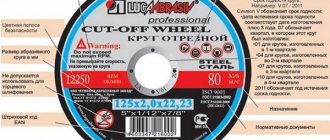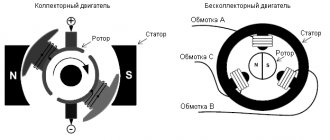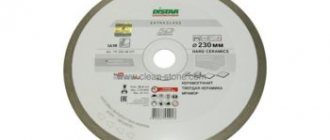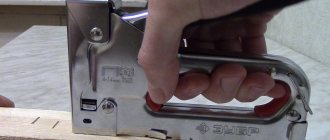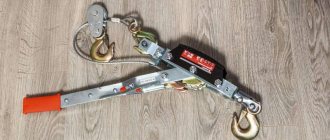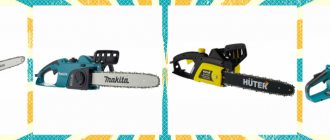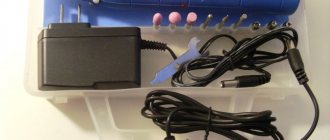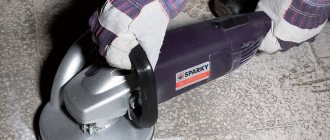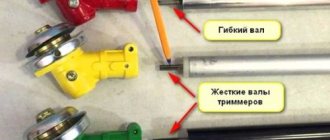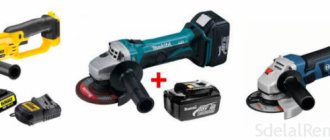Diamond blade design
A diamond disc (AD) is a flat tool in the form of a steel circle with a mounting hole in the center and a cutting part in the form of several layers of diamond chips of various fractions, fixed along the perimeter of the outer edge (rim) by several types of diamond cutting discs. The sinter method is when a diamond is fixed with an alloy of tin, zinc, nickel, cobalt under the influence of high temperature; this method is often used to create discs of the 1A1R, 1A1R-Turbo shape. When tiny grains of artificial diamonds are sprayed onto a special glue using a special technology and fixed onto the disc bodies using galvanization. After hardening, an abrasive structure of increased hardness with a rough surface is formed. After hardening, an abrasive structure of increased hardness with a rough surface is formed.
There is also a method of laser soldering diamond segments to the metal base of the disk body; with this method, already baked segments are laser soldered to the body; this method is used to create 1A1RSS segment disks. After hardening, an abrasive structure of increased hardness with a rough surface is formed.
The way the tiny diamonds are secured to the rim provides varying degrees of hardness on the cutting edge, which determines the purpose of specific blades—the choice of diamond blade. For example, wheels made using galvanic technology are ordered for cutting soft stone such as marble, limestone, travertine or ceramic tiles. And tools obtained by laser welding and sintering are purchased for processing granite, quartz agglomerate, quartz ceramics, concrete, asphalt, marble, and other materials of increased hardness.
There are special slots and holes on the cutting edge of most types of AD. They are designed to reduce stress and remove heat generated by intense friction. The strictly symmetrical arrangement of the slots with careful mass balancing eliminates beating and vibration, ensuring uniform abrasion of the structure of the material that is being cut, resulting in an even cutting seam. At the same time, this design is “afraid” of lateral loads when working on machines. Therefore, diamond wheels are not very suitable for cutting stone along a curved path; waterjet or cable cutting is used for this.
Purpose, principle of operation of Diamond blades
The main purpose of a diamond blade is straight cutting and processing of stone, concrete, and other hard materials. The principle of its operation is the gradual abrasion of the contacted surface into dust due to the high friction force of the diamond face, which is created by the abrasive structure during rotation. A very important aspect of the correct operation of the diamond segment of a cutting disc is the peripheral speed, which depends on the revolutions on the grinder shaft and the diameter of the disc. It is also different for different materials. For example, for cutting Vozrozhdenie granite, it is necessary to meet the condition of contact between the diamond and the material at a speed of 30 m/sec, and for cutting marble 50-60 m/sec. Most manufacturers already take this into account when forming a diamond bond. This releases a lot of heat, resulting in extreme heating. During operation, you should monitor the temperature and promptly cool the disk with water or air. Otherwise, deformations and even destruction of the circle may occur. The first signs of improper cooling or overloading of the disk is the appearance of black carbon deposits on the cutting layer or body. When cutting, only a multilayer edge based on diamond chips comes into contact with the surface of the material being processed. As the material is abraded into dust, its structure is also developed. The decreasing grains of abrasive are replaced by those particles that are in the lower layer. This happens until the rim is completely worn out.
The effectiveness and durability of a diamond wheel is determined by the characteristics of the grit layer. Large particles provide greater friction force, which affects cutting speed. At the same time, they also wear out quickly. Fine abrasive allows for more precise processing at a lower speed. The service life of such wheels is 25–30% longer compared to coarse abrasive.
Working with diamond blades
As noted earlier, diamond blades are used for both dry cutting and wet cutting. Each type has its own nuances that should not be neglected.
Return to contents
Dry method
Dry cutting method with a diamond disc.
The dry method involves purchasing abrasive wheels in which, for faster cooling, air passes between the segments, which appears during the processing of stones of both natural and artificial types. This product construction technology ensures removal of dust from the cutting area, which facilitates work and increases its efficiency, and also removes dust on reinforced concrete. Most often, an abrasive wheel with a diameter of 230 is used, and the cutting depth is no less than 22 mm. This is enough to lay the wiring. To create channels for pipes, you should purchase a product with a diameter of 350.
The dry treatment method is used when repair and construction work is carried out in a room with already installed communications, when the use of water can lead to irreversible consequences. To begin work, the surfaces are cleaned of dirt. Anyone working must remember to take breaks to cool the cutting wheel. Otherwise, the tool will fail. The depth of the passage over reinforced concrete should not exceed 25 mm. To get a deeper cut, you need to insert the tool several times. Also, if work is carried out on reinforced concrete, it is necessary to make shallow cuts without getting into the metal frame. Therefore, it is advisable to use circles with a diameter of 230 mm or more.
Return to contents
Wet cutting
This method involves the use of solid (solid) circles in which diamond coating is applied to the outer diameter. They can be divided into regular and turbo, on which an additional layer of diamond dust is applied. The turbo has a wave-like surface, which increases the level of cooling. Diamond blades for reinforced concrete turbo are considered more durable and are used for cutting reinforced concrete. In general, the wet method is convenient in that the water cleans the area where the work is being done and cools the circle, which makes the work easier. The turbo circle is not sensitive to reinforcement.
A diamond disc for concrete is used to work with strong materials, while during operation there is a relatively low, almost silent, volume level. During work, this product emits much less dust and can be safely used during renovations in an apartment.
Return to contents
Area and methods of application of Diamond blades
To choose the right diamond blade for an angle grinder, you need to know where, how and for what material this tool is used; as a rule, the processed materials are written on the body or packaging of the disk.
In addition to straight cutting, which was mentioned above, abrasive equipment is used for the following types of work:
- Grouting of natural stone floors;
- Forming recesses for fasteners with countersunk heads;
- Removing technical chamfers from products;
- Removing large differences due to inaccurate laying of floor slabs;
- When making sculptures from stone blocks;
- Sanding is the removal of a thin layer of hard material using a coarse abrasive.
There are two methods of treatment using AD: dry or wet. In the first case, cutting is performed without the use of additional devices or technologies. Heat and dust are removed naturally using a specially shaped cutting edge. This method is suitable for rough, short-term processing of relatively soft materials, where high precision is not required, and also when it is impossible to use wet cutting. Process breaks are periodically required to cool the wheel and the material being processed.
Wet machining involves cutting with a constant supply of coolant to the wheel edge and seam. This technology is used for long-term processing of materials of increased hardness. It provides good seam quality with high processing accuracy and the ability to continuously work the segment into the flesh until complete abrasion.
Solid Edge Discs
They are a solid steel disk with a continuous working edge made of diamond chips. Suitable for installation on hand tools and small cutting machines. Cooling is provided by water supply. A more efficient and durable option is turbocharged models with a reinforced cutting diamond layer. In demand for working with reinforced concrete products and reinforced concrete structures. When choosing, it should be taken into account that the width of the diamond coating should not be less than the thickness of the element or structure being processed.
To carry out high-precision work, manufacturers offer products of small thickness - up to 1.6 mm. They are designed for installation on machines that can ensure smooth running, no jerking, no beating. The width of the diamond-bearing layer depends on the diameter of the circle and is in the range of 6-20 mm.
The consumption of diamond coating on a disc depends on the hardness of the materials being processed, their abrasiveness, and saturation with reinforcing elements. To increase the service life, it is recommended to use a powerful tool that ensures stable speed, and choose disks that match the characteristics of the materials.
Types of Diamond Cutting Discs
At the next stage of considering the question of how to choose a diamond blade, we will learn about the varieties of this equipment. There are several criteria for classifying blood pressure. For example, design, arrangement of diamonds, type of cutting, class, purpose, etc.
Construction (structure)
Taking into account the design option, there are four types of circles:
- Solid.
The cutting edge is made solid, without holes or slots, coated with diamonds in several layers. Such discs are used for processing building tiles, marble, glass, artificial stone, and other thin materials when a neat and even seam is required. - Segmented.
They are distinguished by radial slots that divide the cutting edge into symmetrically located segments. Such wheels have better performance due to increased strength, good resistance to mechanical loads and high temperatures. They are ordered for working with materials of increased hardness. Moreover, each of them has its own metal bond configuration. - Turbo.
Such a tool can be easily distinguished by straight and oblique notches on both sides of the rim. They significantly improve heat dissipation efficiency with a small increase in strength. Compared to solid turbo wheels, the processing speed increases by 1.5–2 times. They cut concrete, granite, brick, stones, paving stones, etc. well. - Turbo segmented.
They have the greatest productivity thanks to notches on the cutting edge, divided into segments by slots. The wavy structure with special holes ensures fast and precise cutting of particularly hard structures. For the densest types of concrete, you should choose wheels with fine abrasive. Large fractions are used to process a softer structure.
Diamond Location
Taking into account the location of the diamond chips, two types of discs are distinguished: with a relatively uniform distribution of diamond or with a certain periodicity - in the form of a sandwich (used on segments used on discs with a diameter of 600 mm or more) or special placement of diamond in a bundle, the so-called DPS positioning of diamonds in the cutting layer. The third option is characterized by greater productivity with good heat removal efficiency and lower loads on the angle grinder, angle grinder or machine.
Cutting method
How to choose a blade based on the cutting method? Wheels are divided into two categories: for dry or wet processing. The first tools provide a neat seam, but quickly heat up and create a lot of dust. The second ones are used for cutting large volumes of granite, marble and other types of natural stone. This requires constant supply and removal of fluid.
Quality classes
There are 4 quality classes for classifying diamond blades:
- ECO.
A budget tool for economical processing at home with irregular use. - STD.
Standard discs for universal use with the optimal combination of efficiency and cost. - PRE.
Premium class equipment designed for professional tools. - SPR.
High quality productive wheels for high speed cutting.
Diamond blade for concrete for home use
Well suited for cutting paving slabs, brick, limestone, foam concrete and other similar building materials. Such discs will cut reinforced concrete, natural granite, marble, but will fail very quickly. Therefore, if you have large-scale concrete work ahead, you should use a professional tool.
If cutting concrete will be carried out in the “from time to time and a little” format, diamond wheels of the following brands have the most optimal price/quality ratio: Sparta, Zubr and TsentroInstrument. To increase service life, it is necessary to use the tool strictly for its intended purpose and in no case overheat above normal.
How to choose a diamond cutting disc for an angle grinder
Knowing the design and varieties is not enough to choose the right diamond wheel. Features play a more important role when purchasing. The main parameters are encrypted on labels that are present on each product in the form of a set of numbers, letters, pictograms, and other signs. For example: abbreviation Disc VSN EXTRA LINE Ø230 x 3.0 x 8.0 x M14mm turbo for granite, where VSN is the manufacturer, EXTRA LINE is the name of the line, Ø230 is the diameter of the diamond blade, 3.0mm is the thickness of the disk, 8.0mm – height of the diamond layer, M14 – seat, turbo – for this tool, air cooling of the cutting layer is provided, for granite – the material being processed. There is no strict marking of disks, so manufacturers make the design and color of the case at their own discretion. At the same time, there are general rules that have already been established among builders, portly workers and masonry craftsmen. Let's look at the main characteristics in more detail.
Material the diamond blade is designed to cut
To choose the right disc for working with a specific material, pay attention to the color of the labels on the discs offered and the description on the packaging or the disc itself. Most manufacturers use the following options for marking equipment for an angle grinder or angle grinder:
- White
- for tiles, - Green and black
- for granite and gabbro, - Orange
- for bricks, - Gray
- for ceramic tiles, - Blue
- reinforced concrete and concrete, - Yellow
- for marble and travertine.
Dimensions
These parameters determine not only the cutting depth, but also whether the circle is suitable for a particular model of grinder, machine or angle grinder. Therefore, before purchasing, you need to clarify the characteristics of the tool for which you plan to buy equipment.
- D
- the cutting depth depends on the size of the outer diameter. However, it should not exceed the maximum size specified in the instruction manual for the angle grinder or angle grinder. Standard circles 115–300 mm. - T
- the mounting hole must correspond to the cross-section of the angle grinder shaft. For household tools, wheels with a seat diameter of 22.2 mm and M14 are usually suitable; professional machines can be equipped with discs with a diameter of 25.4 mm. with a hole for the so-called “leash”.
Rotational speed
How to choose a diamond blade for granite and marble, taking into account the maximum speed of an angle grinder or angle grinder?
The permissible rotation speed at which cutting is permitted is indicated on the label. You need to buy those wheels whose parameters match or exceed the characteristics of the tool. Remember, if you install a disk with a lower maximum speed threshold, it may collapse under the influence of high centrifugal forces. When purchasing, we recommend that you check with the manager in what modes this or that tool can be used, having first told as much as possible about the material being processed and the specific task.
TOP best manufacturers
The best discs for granite with M14 or 22.2 fit:
- Granite Line Stoneunion
- Euro Standard Tech-nick (Euro Master Tech-nick)
- Turbo flash VSN
- Granite Master Line Diam
- Granite Pro Line Diam
- Turbo Grinder
The best discs for marble with M14 or 22.2 fit:
- Galvanic disk Tech-nick Flash
- Galvanic disc TUK
- Galvanic disc DIS (Diam-S)
Best discs for concrete:
- Turbo wheels DIAMASTER COBRA
- Reinforced Concrete Extra Line Diam
Best discs for ceramics:
- Hard Ceramics Diam
- CERAMICS-ELITE Diam
- Dekton Techno Diamond crown
Best discs for quartz:
- crown Quartz Tech-nick
The best discs for bricks:
- Leader Diam
How to choose a diamond blade for an angle grinder
When selecting a diamond blade, you need to pay attention to the type of material for which the disk is intended, its size, bore diameter and rotation speed of the disk.
Material to be worked with
Most diamond wheels are designed to work on non-metallic materials. They are most often used for cutting concrete, ceramics, glass, brick and asphalt. But there are a number of blades designed to cut metals of varying hardness. When purchasing, remember that different types of diamond blades are designed to work with different materials. There are discs designed to work with concrete, ceramic tiles, marble, granite, sandstone, stone and asphalt.
There is a certain rule for choosing a disc - for soft materials, discs with a hard diamond surround are selected, and for hard materials, with a soft one. This is determined by the degree of wear of the artificial diamonds located on the rim of the circle.
When cutting hard materials, they wear out faster and the next ones take their place from a fairly soft cutting strip. Soft materials have little effect on diamond; it must remain in its place for as long as possible, which is ensured by the solid substance in which the mineral is embedded.
In addition, different artificial diamonds are used for different wheels.
Two types of diamonds are produced industrially:
- Monocrystalline, representing one spatial structure of regular shape;
- Polycrystalline, consisting of several smaller single crystals tightly interconnected.
The former are very durable and are used for cutting hard materials and metals, the latter can be destroyed upon contact with them, therefore they are used on cheaper tools designed for relatively soft materials.
Diamond blade sizes
The maximum depth of cut and, in some cases, the speed of work depend on the size of the disc. The main diameters are 115, 125, 180 and 230 mm, which corresponds to abrasive wheels for angle grinders of the most common brands. Diamond blades with a diameter of 150, 300 and more millimeters can also be found on sale. Large diameters are installed on powerful cutting machines - gas cutters, stationary cutting machines, etc.
The most common disk mounting holes can be 22.2 mm or 25.4 mm. Buy only the size blade for which your tool is designed.
Never install a large blade on a grinder that is designed to work with a smaller blade without first removing the protective cover. This is very dangerous, since if the metal disk breaks, you can cause fatal damage to your health. If you have such ideas, then find on the Internet photos of the consequences of working with a diamond blade without a protective casing and you will forever stop wanting to work without protection.
Disk rotation speed
The maximum rotation speed and linear speed are also indicated on the discs. If the capabilities of your tool exceed the characteristics of the disk, then you cannot install it - centrifugal forces will simply tear it apart.
What to avoid during operation
To ensure high-quality and safe manual cutting, observe the following rules during operation:
- Buy discs that fully comply with the characteristics of an angle grinder or angle grinder.
- Buy discs specialized for the materials you plan to saw.
- Never remove the protective cover to install larger diameter blades.
- Use protective equipment: glasses, an apron or gown, gloves with rubber pads and a respirator.
- Avoid tilting your head forward and staying close to the grinder.
- Periodically remove the rotating circle from the seam without turning off the grinder to cool.
- Do not allow sharp pressure, curved or rather deep cuts in one pass.
Problems that arise during work and solutions
The main problem that arises when processing granite is rapid wear of the cutting edge or soaping of the segment. The reasons for this situation may be:
- incorrect selection of circle;
- malfunction of the grinder drive, angle grinder;
- excessive pressure.
To avoid excessive wear of the disk, buy only high-quality consumables intended for the material you plan to process. When selecting, we recommend that you contact the specialists of our store. Before starting work, always check the functionality of the tool. Carry out cutting in several passes with moderate pressure.
If the disc segments quickly become dull, it means that the choice was made incorrectly taking into account the hardness of the material, or the load needs to be reduced and cooled more often. If the slightest crack appears on the wheel, stop cutting immediately and replace the equipment. When beats, fluctuations in speed, or their spontaneous increase or decrease appear, you should also stop work and take the angle grinder for repair.
